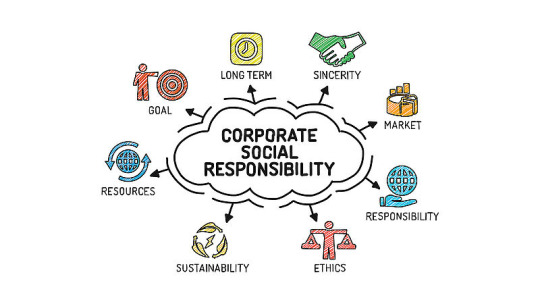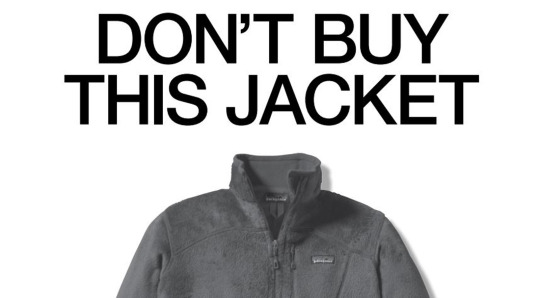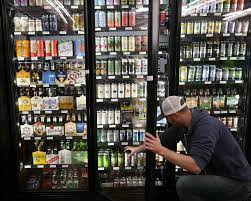Don't wanna be here? Send us removal request.
Text
Expecting More from Companies in the Age of Social Responsibility

With the rise in the popularity of behavior science in the 2000s, marketing experts wisely pointed out that none of this was new. These were tricks that companies had been using for decades, but there was no formal language or area of research around it. Then books, such as Influence by Cialdini, hit the market. Despite the fact that this is a cult classic in the marketing industry, it was written to arm people against “compliance professionals,” to help people avoid being manipulated.
This book and the rising popularity of “nudges” is the precursor to the “woke” culture we see today. There was a shift in consumers becoming more critical of the brands they support. Consumers began to demand that companies take responsibility for their impact on society. Companies were expected to communicate their values and stick to them in all parts of business. This demand was justified.
A great example of the impact companies can have on society is whitening products. Emami, a subsidiary of Unilever, justifies their production and advertising of whitening products by simply claiming they are giving people what they want.
“There is a need in our society for fairness creams, so we are meeting that need…. There have been studies carried out across the world that . . . show all consumers, whether fair or less fair or dark, are dissatisfied with their skin color. Everyone wants their skin tone either two shades lighter or darker. In our part of the world, skin lightening is something that people look for.”

But where did that need come from?
This is the problem. The imagery, narrative, and use of celebrities in their advertising have artificially created the need for whitening products in society. It is a constant bombardment of messages that tell people they are undesirable, but there is a product that can fix that.
Obviously, this became a problem with the rising demands for companies to be responsible for their impacts. In contrast to Emami, Dove, another Unilever subsidiary, released an iconic advertising campaign celebrating diversity of skin-tone and body shaped. Dove was celebrated, despite being linked to Emami via Unilever. However, some consumers were still skeptical. Did they do it only knowing it boosts their sales?
So how do you create branding and marketing that conveys values in an altruistic way? Take a look at Patagonia. Patagonia is part of the textile industry which is one of the most taxiing industries on the environment, but they have created a strong brand around environmental protection.
Patagonia have a few of the most iconic campaigns of the last decade, the “Don’t buy this jacket” and their decision to close for Black Friday and donating 100% of online sales proceeds. On the surface, it’s really easy to say this wasn’t altruistic and still a ploy to increase sales. After all, these campaigns have greatly increased Patagonia’s market size and even the sales of that jacket. So how is this different?

Look to the behavioral concept of Cooperating Without Looking. The easiest analogy is to imagine a relationship you have in 2 alternate universes. In universe A, your partner wants to take a break to date around for a while before fully committing. In universe B, you partner tells you “I don’t need to look around, I know I want you.” In which universe do you feel more wanted? Sure, the approach of dating around is logical, but we aren’t logical. We are emotional being. We have the need to feel wanted and the person in universe B sounds like a romantic movie. Patagonia is your universe B.
Patagonia made these moves before everyone and had no idea if it would help them in the long-run. Sure, they believed a deep commitment to their values and customers would do that, but they had no way of knowing. This is what makes their actions much more powerful than the constant “we stand with…” statements or performative gestures to appear inclusive or green. It also has a lasting effect where future actions by Patagonia are more trusted.
In the age where consumers expect responsibility from companies, ambivalence and inaction is not acceptable. Emami can’t hide behind the illusion of customer needs because companies are expected to address the problems they are a part of in an authentic way. Motives matter and consumers seek them out regardless of whether or not they are aware of it.
1 note
·
View note
Text
If it Doesn’t Fit, Don’t Force It
The resurgence of the Burberry brand is almost perplexing in retrospect. The brand suffered in previous years because of a rapid expansion of the product into markets around the world that created a sprawling and unchecked distribution chain. Products were sold in stores that didn’t match the brand, price points were inconsistent, and quality was all over the place. This was detrimental because Burberry was about “luxury and durability.”

What seems perplexing is that their solution was to expand in a different way. Most people would have expected them to pull back on these other markets and get to where they were originally. Instead, they looked for opportunities and found one situated between Polo Ralph Lauren and Giorgio’s Armani. They believed there was a market for individuals that didn’t fit either of these brands. People that wanted “accessible luxury” that served a purpose. We will get back to the brilliance of this, but just identifying the opportunity wasn’t enough.
Before making the move Burberry thought critically if this would fit with their core brand, which it did. Their origins are the trench coat, their check was an iconic symbol for class, and the space matched what they knew. With this, they began building out a larger womens, mens, and accessories line. At every turn, they asked themselves whether or not it fit with their core brand. They also took this protective stance to their core in choosing everyone they worked with. When they expanded to fragrances and timepieces, they licensed out their brand discriminately to ensure their partners would value and protect their brand similarly. Even with advertising, they chose their partner because he “understood the importance of the heritage to the brand.”

This consistent dedication to their foundation allowed Burberry to grow and expand, but not change who they were. Their core was about functional luxury, things that are appealing to wide ranges of demographics. Very few companies are capable of this because the brand heritage is unique and can’t be easily created. Infusing this with modern business approaches to expanding a product portfolio made them appealing to many. This is the brilliance of accessible luxury. They devised a way to stay exactly who they are while welcoming different kinds of individuals to the brand.
1 note
·
View note
Text
Consumer Perception: What Wine Preferences Tell Us About Branding and Choice
There is a story about the walking paths of Columbia University. It is said that instead of enforcing students to “keep off the grass,” Dwight Eisenhower (President of Columbia at the time) told them to watch students for a year and place sidewalks where they carved paths. What everyone should take away from this story is that they designed for the way humans actually behaved instead of trying to change the behavior themselves.
This is an important lesson for anyone in branding because it guides companies to gain a deep understanding of consumer choices. In the wine industry, countless blind tastings have demonstrated a significant experience gap between perception and actual experiences. As demonstrated by Wansink et al., the names and brand labels of wines influence our evaluation of a wine and impact secondary behavior as well (e.g. enjoying and eating more food).
So how exactly are we judging the labels? As it turns out, we makes judgements based on region, brand, and the grape, but region is the most dominant in our choices. The more prestigious the signals, the more positive our confirmation bias. For example, a wine from France with an elegant label/packaging will be judged more positively than an unrecognizable wine from a region not known for their production, such as North Dakota.

This shouldn’t be surprising. Unless you are trained, walking into a wine store is overwhelming. There is a panoply of options and difficult to differentiate. Therefor, we have used signifiers, such as region, to help us shortcut decisions and narrow our choices. This second part, narrowing choices, has been aided by the industry as well. A great amount of consolidation has reduced the cognitive demand for making a choice on brand. In the example of Concha y Toro, I know I want Chilean wine and then I can select a brand I trust to further narrow options (Concha y Toro). From there, it is easy because I can use price points to choose the level I want. Think of this as a decision funnel.

However, this begs the question, how do you get them to choose Chilean? This is more difficult because while we have individual brands, there is also brand perception of where wine is from. This is another benefit of consolidation, whether under a single brand or a consortium of producers working together. Businesses can hone and streamline brand message for exports. In the case of Chilean wine, they identify a natural perception of quality for a good price. Eisenhower would suggest looking at that deeper and seeing how this can be utilized. More and more people are aware that price of wine doesn’t always translate to quality, and people are increasingly assigning value to the sensible intellect who doesn’t fall for traps. Chilean wines could appeal to this trait value by making it more salient. So when an individual comes over with a bottle of Conch y Toro, you think, “Smart choice! He must know his wines since he doesn’t buy into the overpriced stuff.” And if people aren’t aware of it, bring a bottle to your next get together and share the story. I’m sure it will resonate.
2 notes
·
View notes
Text
Learning to Nudge? Ask Yourself One Question
The concept of nudging has become wildly popular since Richard Thaler’s book, ”Nudge” and the ride of Freakonomics. However, the concept of a nudge is quite often misapplied. A nudge is:
“ any aspect of the ‘choice architecture’ that alters people’s behavior in a predictable way, without removing any options or significantly changing economic consequences.”
This definition leaves a lot of space to be creative and the domain provides a 3-dimension framework for categorizing nudges. This is a great framework for analyzing scenario and identifying leverage points, but I encourage you to ask yourself one question before you start to design.
This concept is credited to Kurt Lewin and later simplified by Daniel Kahneman as, “instead of asking, ‘How can I get him or her to do it?’ it starts with a question of, ‘Why isn’t she doing it already?’ This may seem small or even inconsequential, but it is incredibly profound. Each of us have a set of driving forces and restraining forces related to a desired behavior. For example, when we want to eat healthy we may think about living longer for family or looking good in a swimsuit, driving forces. But we are also tempted by the flavor and ease of unhealthy choices. When we ask ourselves Kahneman’s question, we realize that immediate reminders of our driving forces or removing temptation from our immediate environment makes our desired choice easier.
This is why nudging is so wonderful. It bucks the trend of offering up incentives. In general, we want to do things that are good for us, but it is tough. Society is designed to entice us into buying things we don’t need, to over consume, and to be constantly distracted by things that aren’t actually our priority. Nudging can help people achieve their true desires…. If done appropriately. Nudging and behavior science as a whole can be used to negatively manipulate people. I believe if we lead with Lewin’s insight, we are much more likely to remove the restraining forces preventing us from reaching our goals or provide us with a more complete view so we can make the better choice. If done right, nudging evens the playing field.
1 note
·
View note
Text
Don’t Ship it and Forget It
Have you ever had to ship something you own of extreme value to someone else? I am sure you took painstaking steps to ensure its safety. May you have paid extra or delivered it yourself. Brand is the same thing. It is possibly one of the most important and fragile things a company has, so it needs to be shipped with care.
This is what Corona understood. From its onset, Corona developed a network of producers, distributors, and marketers built on trust. My brother-in-law owns a brewing company outside of Boston and I remember early discussions about the importance of distribution. Particularly the influence distributors have on perception and acquisition of new products. Even when a craft store chooses to stock your beer, where is it located? Is it refrigerated? Is the staff properly educated to talk about it? (the good stuff is in the fridge at eye level!)

This may seem like excessive thought, but it isn’t. Bad experiences and perceptions spread like disease, especially when it comes from someone with extra weight to their words. Corona ensured the end result would be appositive experience by focusing on creating strong relationships with their distributors and having regional presence to nurture the growth of brand specific to that area. On the other hand, Heineken put their product in a box, said it was great, and assumed that would be enough. It wasn’t. National advertisements live far from the end-user experience. The space between has too many steps where Heineken has no one looking out for their brand.
This difference between the two is a difficult hurdle for Heineken to overcome. Corona’s network worked like a grassroots movement where growth accelerates over time. It would be incredibly difficult for them to entirely change their approach without significant losses. If you start a company, take a note from Corona. It is worth the smaller losses overtime to build trust and commitment. This at least partially works because of the reciprocity principle. When people give us something or invest in us, we are compelled to give back. That’s why people shove things in your hands and then ask for the donation.
0 notes
Text
Imagined you are tasks with selecting good beers for a get together with your friends, but you don’t know anything about beer. In fact, you’re a wine drinker. To make matters worse, the only beer store in town is a strange one. No beers have labels or notes and the store has no one to help you, BUT you can go ahead and taste any beer in the store. How are you going to make your decision?
The majority of people would turn to prices, the higher the price the better the beer. This actually isn’t the worse strategy and a common heuristic we use to shortcut a decision on quality. Now, what if all the beers are the same price? Now we have a dilemma because we lack knowledge to predict the quality of experience.
This is the same problem Intel had in the 80s. The company was developing newer and faster chips one after the other, continually outpacing anyone who dared to challenge them. However, they couldn’t get their newest products to end users. The problem, end users had no idea how to know the 386 was better than the 286. What’s the difference? 100?
At the time, the only people who could distinguish the difference were engineers and they aren’t the ones who drive demand, the end-users do. This is a problem anyone with a new technology. Consumers need common language, the ability to compare, and an ability to identify in order to make their choice. Think about your friends who are beer aficionados. When they talk about their favorite beer they may mention hops, bitterness, mouthfeel, drinkability, etc, all traits we can use in a store to discern the best choice.
If there isn’t already a framework for discerning value in your product, how do you create one?
Let’s look at how Intel did it.
Comparison
Intel needed to give consumers a salient way to understand which chip will give them the best experience. Looking into the “specs” wasn’t going to cut it because it was too technical and tough to comprehend. To make the comparison easy they first created the “Intel” brand umbrella for all of their chips. This creates the idea of a line of products with successors. If product 5 comes after product 4, it is easy for me to believe that 5 is an improvement on 4 (think iPhones).
Additionally, they ran an ad campaign that directly connected the difference in the chips to the way consumers make choices. The message of the ad was the 386 is the same price as 286, but it also has a bunch of advantages. Same price for more? Count me in. Now that consumers could compare, they needed to identify.
Identification
Imagine you are a consumer who can easily determine which chip on the market is the best. How will you find it? Labels are critical for this problem. They help us shortcut our search. This might be most salient at a grocery store where labels such as Organic have instant value. To solve for this, Intel started a co-branding campaign, “Intel Inside,” to create their own label. Having all computers with Intel ships prominently display the Intel logo paired with memorable ads with direct messaging, “How to spot the very best computers,” the process of picking out the computer with the best technology became easy. All a user needs to do is identify computers with the logo and ask which one has the latest chip, which you already know from a commercial.
Adding labels to products to convey something that is invisible to our eye is critical. We can’t distinguish the competitive advantage of your product without help. Additionally, the emotional experience of feeling competent in a purchase is incredibly valuable. Not only is your experience heightened by a sense of confidence, you walkaway ‘knowing’ you successfully made the best purchase.
The other output of this campaign was getting consumers to pay attention to microprocessors. This was so successful that it has become a heuristic in the way we compare computers. Sure, we have preference for operating systems and aesthetics, but once that choice is made we want to know which one is the fastest.
Additional Thoughts
The campaigns of Intel were highly successful in create social knowledge and awareness for consumers to make choices, but it isn’t enough when other competitors enter the market. Intel continued to innovate and develop better chips at an accelerated rate in the mid to late 2000s, but they needed to reach a broader market. To do so, we saw a deeper connection in marketing between computer and experience than whether or not it is faster. We see people editing cool videos of vacations, creating music, designing works of art and more. These visuals create excitement in end-users, which is the ultimate goal. Tie your competitive advantage to the experience and values end-users care about.
4 notes
·
View notes